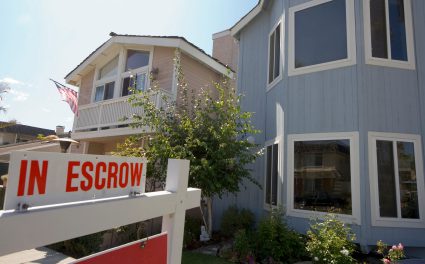Two roads diverged in a pandemic economy, and Californians are traveling both.
While thousands across the Golden State fell behind on their mortgage and rent payments during the COVID-19 pandemic, the pendulum swung the other way for its most affluent residents. This phenomenon is best characterized as a K-shaped recovery, in which different industries recover from a recession at drastically different paces.
The case for a K-shaped recovery is strengthened by the simultaneous increase in mortgage foreclosures and second home sales. October 2020 officially marked a drastic surge in the demand for second homes, rising 120% nationally from the previous year’s 20%, according to a Redfin report.
This surge continued into April 2021 when second home sales enjoyed a 178% year-over-year increase. Redfin’s report also states eight of the 10 counties that contain vacation hotspots across America, such as Palm Springs and Lake Tahoe in California, have seen a significant spike in home sales during the pandemic.
All the more impressive (or shocking) is that the median sales price in these seasonal towns grew 21% year-over-year. This is compared to only 14% in non-seasonal towns.
How California’s recovery diverges
The spectre of a K-shaped recovery looms large as the recession hangover sets in. High income earners were more likely to keep their jobs or work remotely than lower-wage workers, who were more likely to be employed in the hardest-hit service jobs that cannot be performed remotely.
With so many Californians suddenly spending more time at home, the wealthiest had an incredible incentive to exchange dense, expensive urban cores for more space and better proximity to the great outdoors. Throw in record-low mortgage rates and an increase in mortgage-rate locks, and you have the perfect storm for vacation home acquisitions.
This demand had steady momentum prior to the pandemic, but it rose to an all-time high in 2020 — so high, in fact, that the demand for second homes surpassed primary homes in 2020.
The buyer surge seemed unstoppable heading into the 2021 summer season, as it was for the first half of the year, but has since waned. The inflection point occurred in June, punctuated with a significant 21% year-over-year drop in July.
This slowdown is tied to skyrocketing home prices, a steady return to office work and tightened mortgage lending rules for second homes. Additionally, those willing and able to snap up vacation homes have likely already done so during the favorable conditions in the buying surge.
So while the second home market may have cooled for some, the threat of a K-shaped recovery remains. This is because a full housing recovery in California will not occur without a jobs recovery first. The lack of a healthy jobs recovery threatens a domino effect on the housing market in 2022, with the catalyst of the impending expiration of foreclosure and eviction moratoriums.
Agents: keep your finger on the pulse of your local economy’s jobs recovery. Check out firsttuesday’s jobs charts for local employment recovery data in your service area.














